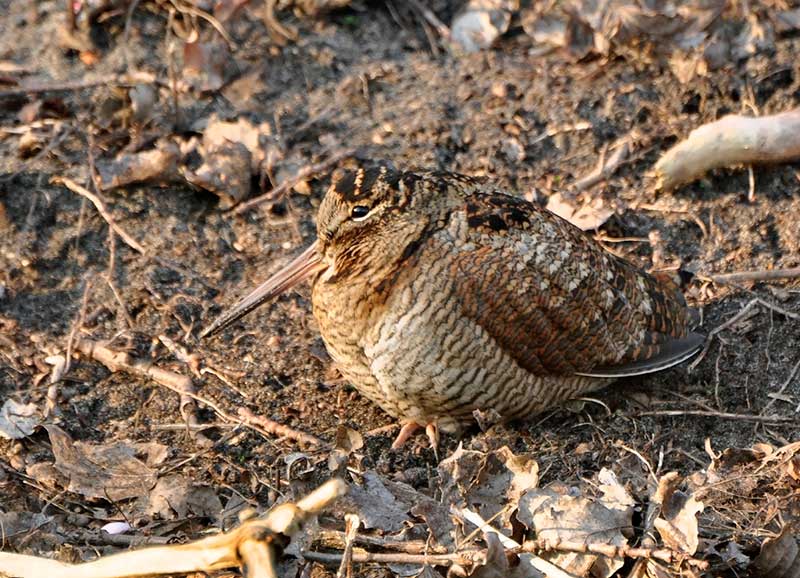Main Menu

Breeding birds: 55,251 pairs
Wintering birds: 1.4 million birds
Family: Sandpipers And Allies
Woodcocks have heavily vermiculated rufous-brown upperparts with black, grey, brown, and white bars and mottling, and a reddish rump with faint, dark bars. The tail is rufous with a dark brown and grey tip. The underparts are pale buff with fine dark grey-brown bars.
The head is pale grey-brown with a dark brown crown with 3 or 4 black bars. The face is buff with dark stripes in front of the eye, and a white crescent below, and the chin and throat are white. The long, thin bill is pinkish with a dark tip, the eyes are dark brown, and the legs and feet vary from grey to pink.
Males and females are similar but the male is much larger.
Juvenile woodcocks resemble adults but have a more spotted forehead
Try our interactive bird identifier
Woodcocks breed from early March to mid-April and produce 1 brood a season. They are polyandrous and form short-term pair bonds. They nest in broadleaf or mixed forests with dense undergrowth. The female builds the nest which is a shallow depression in the ground often at the base of a tree, lined with feathers, dead leaves, and other plant material.
Woodcocks lay 2-6 smooth, slightly glossy, buff creamy white eggs with brown spots, speckles, and blotches., which are incubated by the female alone for 21-24 days. Chicks are precocial and covered in pale buff down with dark spots and bands. They leave the nest immediately after hatching and can fly short distances at 10 days. They fledge at 15-20 days and reach sexual maturity at 2 years.
Woodcocks feed mainly on earthworms which they forage from fields and woodland, probing with their long, sensitive bill. They also eat spiders, leeches, caterpillars, snails, beetles, crustaceans, and slugs, as well as plant matter such as seeds, fruits, leaves, grasses, and grain.

Woodcocks can be seen in the summer all over the UK except for south-west England. In winter they are more widespread in lowland areas. They are difficult to spot unless disturbed but look out for them in woodland, and nearby pasture and ditches.
Woodcock’s eyes are located high on the sides of its head giving it 360 degree monocular vision.